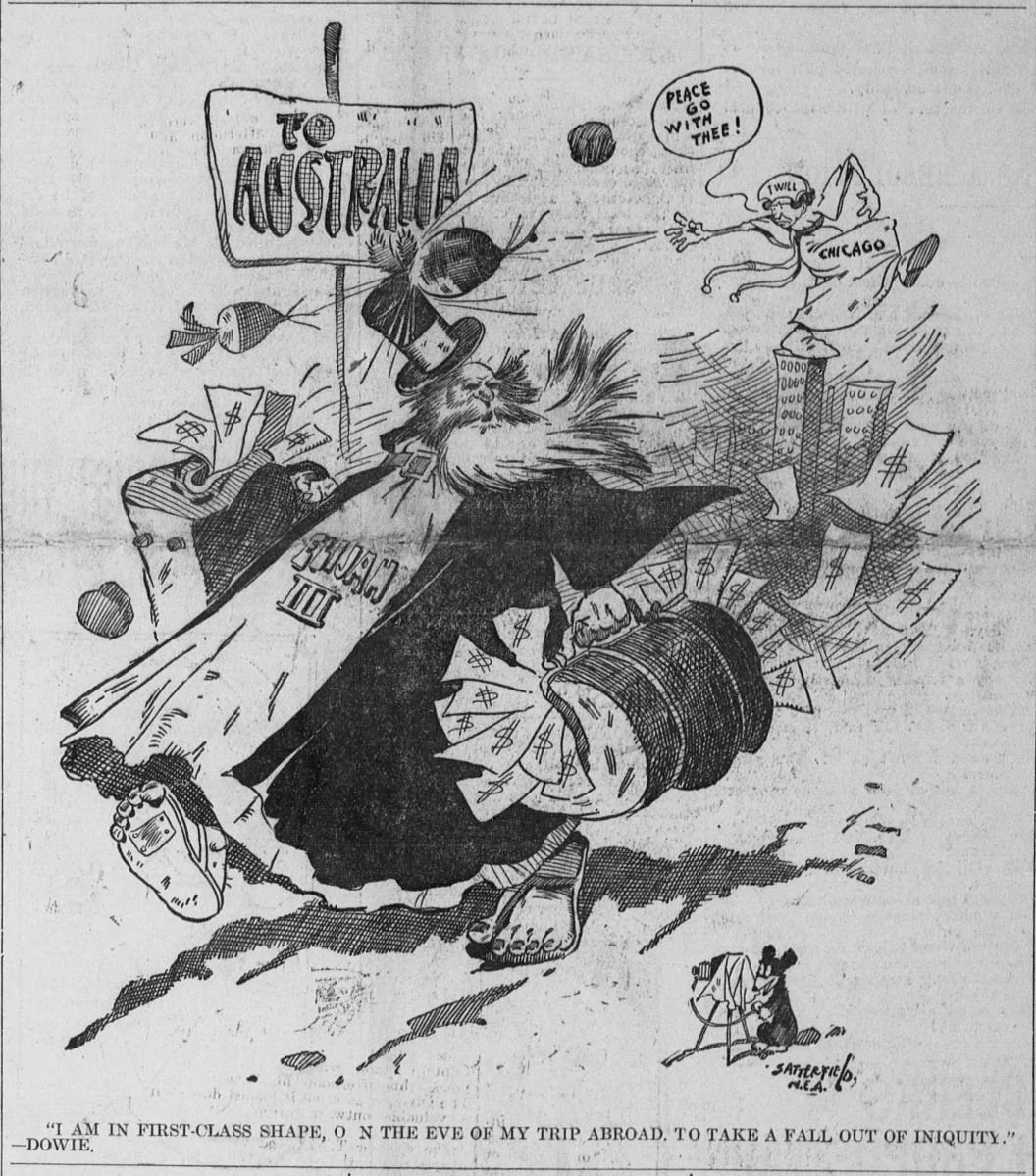Ep. 132 - Elijah is Coming!
Sunday! Sunday! Sunday! Elijah is Coming!!!
John Alexander Dowie
Topics in this episode include epiphanies in Dubliners, the transformative power of peristalsis, Leopold Bloom and the Prophet Elijah, the peculiar tale of John Alexander Dowie, God’s bloodlust, the also peculiar history of the Salvation Army, what religion and advertising have in common, phosphorescence, polygamy, monster trucks, Bloom as a redeemer for Ireland, and the surprising origin of the city of Zion, Illinois.
Support us on Patreon to access episodes early, bonus content, and a video version of our podcast.
On the Blog:
Elijah is coming! Is Coming!! IS COMING!!!
Blooms & Barnacles Social Media:
Facebook | Twitter | Instagram
Subscribe to Blooms & Barnacles:
Apple Podcasts | Spotify | YouTube
Further Reading:
BOYSEN, B. (2008). I Call That Patriotism: Leopold Bloom and Cosmopolitan Caritas. The Comparatist, 32, 140–156. http://www.jstor.org/stable/26237182
Burgess, A. (1968). ReJoyce. New York: W.W. Norton & Co.
Cox, P. & Porzucki, N. (2017, Mar 29). How Christianese became a thing. The World in Words. Retrieved from https://audioboom.com/posts/5761447-how-christianese-became-a-thing
Ellmann, R. (1972). Ulysses on the Liffey. Oxford University Press. Retrieved from https://archive.org/stream/in.ernet.dli.2015.65767/2015.65767.Ulysses-On-The-Liffey_djvu.txt
Janusko, R. (1992). More on J.A. Dowie (& Son). James Joyce Quarterly, 29(3), 607–613. http://www.jstor.org/stable/25485296
Morse, J. (2015). The Picture Odyssey of Ben Bloom Elijah. James Joyce Quarterly, 52(3/4), 669–681. http://www.jstor.org/stable/45172702
Osteen, M. (1995). The economy of Ulysses: making both ends meet. New York: Syracuse University Press. Retrieved from https://tinyurl.com/yycf2ar5
Romanoff, A. Lestrygonians-Modernism Lab. Retrieved from https://campuspress.yale.edu/modernismlab/lestrygonians/
Schwarz, D. (2004). Reading Joyce’s Ulysses. Palgrave Macmillan.
Voelker, J., & Arner, T. (1990). Bloomian Pantomime: J.A. Dowie and the “Messianic Scene.” James Joyce Quarterly, 27(2), 283–291. http://www.jstor.org/stable/25485035



